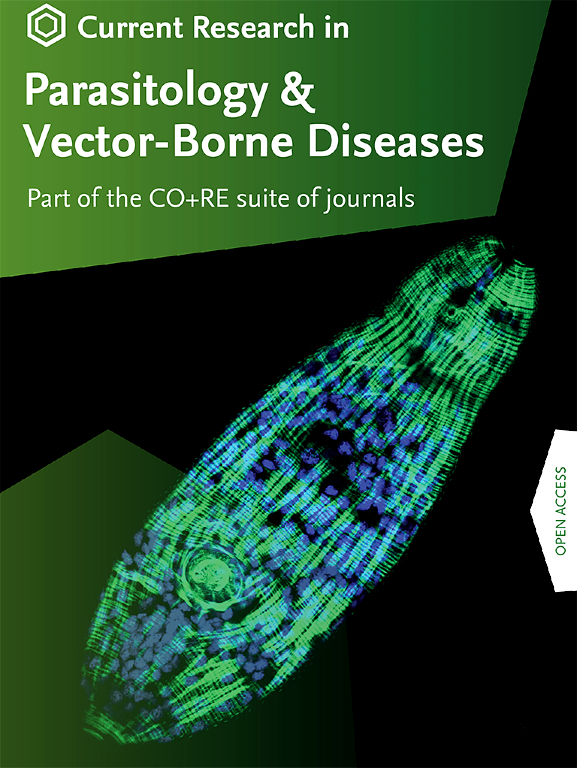Ver ítem
- xmlui.general.dspace_homeCentros Regionales y EEAsCentro Regional Santa FeEEA RafaelaArtículos científicosxmlui.ArtifactBrowser.ItemViewer.trail
- Inicio
- Centros Regionales y EEAs
- Centro Regional Santa Fe
- EEA Rafaela
- Artículos científicos
- Ver ítem
Molecular characterization of novel Ehrlichia genotypes in Ixodes auritulus from Uruguay
Resumen
Ehrlichia are small intracellular Gram-negative bacteria transmitted by ticks. These microorganisms cause ehrlichiosis, a complex of life-threatening emerging zoonoses and diseases of global veterinary relevance. The aim of this study was to investigate the presence of Ehrlichia in free-living Ixodes auritulus collected in Uruguay. Ticks were collected from vegetation in five localities from the southeast and northeast of the country between 2014 and
[ver mas...]
Ehrlichia are small intracellular Gram-negative bacteria transmitted by ticks. These microorganisms cause ehrlichiosis, a complex of life-threatening emerging zoonoses and diseases of global veterinary relevance. The aim of this study was to investigate the presence of Ehrlichia in free-living Ixodes auritulus collected in Uruguay. Ticks were collected from vegetation in five localities from the southeast and northeast of the country between 2014 and 2017. Detection of Ehrlichia DNA was performed in pools of adults or nymphs grouped according to the collection site and date. A total of 1,548 I. auritulus ticks were collected in four of the five locations sampled. Fragments of three loci (16S rRNA, dsb and groEL) were obtained by PCR, and phylogenies inferred using Bayesian inference analysis for each gene independently. DNA of Ehrlichia spp. was found in 15 out of 42 tick pools. Based on the topology of the phylogenetic trees, our sequences represent two novel genotypes for the genus named as Ehrlichia sp. Serrana and Ehrlichia sp. Laguna Negra. Both genotypes were closely related to Ehrlichia sp. Magellanica, a species detected in Ixodes uriae and Magellanic penguins. Considering that all stages of I. auritulus and I. uriae are parasites of birds, their phylogenetic relationships, and common eco-epidemiological profiles, it is reasonable to state that these genotypes of Ehrlichia spp. may represent a natural group likely associated with birds. Our results constitute the first characterization of Ehrlichia spp. in Uruguay. Future studies on birds reported as hosts for I. auritulus are needed to further understand the epidemiological cycles of both Ehrlichia genotypes in the country. Finally, I. auritulus does not feed on humans, so the two Ehrlichia species reported herein might have no implications in human health.
[Cerrar]

Autor
Félix, María L.;
Muñoz-Leal, Sebastian;
Carvalho, Luis A.;
Queirolo, Diego;
Remesar Alonso, Susana;
Nava, Santiago;
Armúa-Fernández, María T.;
Venzal, José Manuel;
Fuente
Current Research in Parasitology & Vector-Borne Diseases : 100022 (Available online 13 April 2021)
Fecha
2021-04
Editorial
Elsevier
ISSN
2667-114X
Formato
pdf
Tipo de documento
artículo
Palabras Claves
Derechos de acceso
Abierto
 Excepto donde se diga explicitamente, este item se publica bajo la siguiente descripción: Creative Commons Attribution-NonCommercial-ShareAlike 2.5 Unported (CC BY-NC-SA 2.5)
Excepto donde se diga explicitamente, este item se publica bajo la siguiente descripción: Creative Commons Attribution-NonCommercial-ShareAlike 2.5 Unported (CC BY-NC-SA 2.5)


